Star cluster | ||||
Group of stars |  Automatic translation Automatic translation | Updated June 01, 2013 | ||
Image: This video sequence begins with a wide-field view of the central regions of the southern Milky Way. On the zoom, we can see many famous objects, including the Lagoon Nebula. In the final sequence, we dive deep into the dusty regions and reveal two globular clusters, UKS 1 and VVV CL001. VISTA Telescope image at the ESO Paranal Observatory in Chile. | A star cluster is a small group of stars present in the disk of our galaxy or that of other spiral galaxies. |
Group of stars of Quintuplet | ||||||||||||||||||||||||||||||||||||||||||||||
The group of Quintuplet is situated unless hundred light years of the galactic, old center about four million years. | Image:Group of stars of Quintuplet | 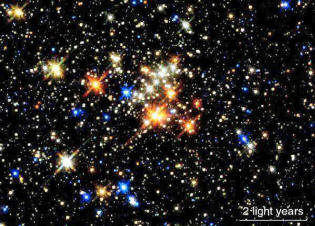 | ||||||||||||||||||||||||||||||||||||||||||||
Group of stars M80 | ||||||||||||||||||||||||||||||||||||||||||||||
Star clouds M80 is a beautiful spherical heap of 8th magnitude is one diameter 86 light years. Visually it looks like completely a comet. | Image:Group of stars M80 | 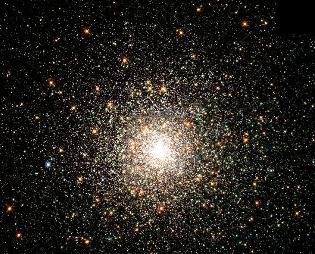 | ||||||||||||||||||||||||||||||||||||||||||||
Group of stars Westerlund-2 | ||||||||||||||||||||||||||||||||||||||||||||||
Star clouds Westerlund-2 is a small cluster of young stars from 1 to 2 million years, located 10 000 light years from Earth in the hull of the nebula, located itself in the Sagittarius arm of our Galaxy. | The bright sources of X-rays are evidence of the collision of stellar winds from 2 stars this massive binary system, which is also found in other binary system. Image: The star cluster Westerlund 2, taken by the Spitzer telescope. It Westerlund 2 belongs to one of the most massive stars known so far: WR 20a. | 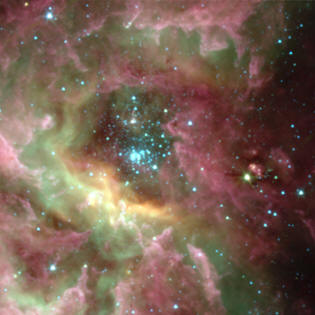 | ||||||||||||||||||||||||||||||||||||||||||||
Group of stars Pismis 24 | ||||||||||||||||||||||||||||||||||||||||||||||
The young stars Pisma 24-1, very bright, located 8 000 light years from Earth, scientists strongly interested because it was a size limit to that theory considers as possible. | Image: At the bottom of the image the nebula NGC 6357 which is 8 000 light-years from us, in the constellation Sagittarius. The nebula is illuminated by the star clusters Pisma 24, at the top. The brightest of these stars, Pisma 24-1, with a size of 200 to 300 times the mass of the Sun, is in fact a double star, revealed by Hubble. | 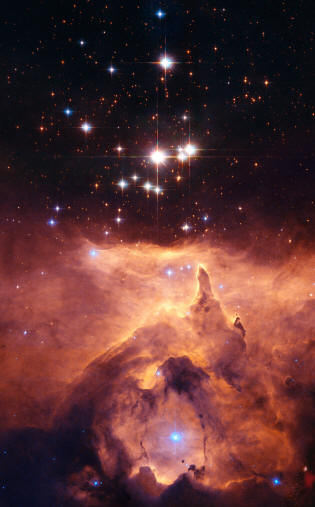 | ||||||||||||||||||||||||||||||||||||||||||||
Group of stars NGC 602 | ||||||||||||||||||||||||||||||||||||||||||||||
Another beautiful photo from the Hubble space telescope on the stellar cluster NGC 602. | Image: The star clusters NGC 602 is at the heart of the Small Magellanic Cloud, as seen in the bottom left of the photo, on the outskirts of the nebula N90, a distant galaxy among a set of much more distant galaxies yet, backward plan. | 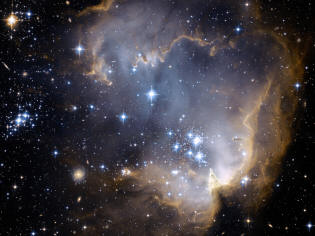 | ||||||||||||||||||||||||||||||||||||||||||||
Group of stars M25 or IC 4725 | ||||||||||||||||||||||||||||||||||||||||||||||
Many stars like our Sun formed in open clusters. The photo below cons of the open cluster M25 (or IC 4725) contains thousands of stars and is located about 2,000 light years away. Table: Spectral types stars. | Image: The star cluster M25 is located in the heart of the constellation of the Archer (Sagittarius). It was discovered by Philippe Loys de Chéseaux in 1745, Charles Messier included it in his catalog in 1764. |
| class | Description | temperature |
| O | super massive star | ≥ 30000 K |
| W | Wolf-Rayet star | ≥ 25000 K |
| B | massive star | 10000 - 30000 K |
| A | large star | 7300 - 10000 K |
| F | solar type | 6000 - 7300 K |
| G | solar type | 5300 - 6000 K |
| K | solar type | 3800 - 5300 K |
| M | sub solar | 2500 - 3800 K |
| C | carbon star | 2400 - 3200 K |
| S | sub carbon star | 2400 - 3500 K |
| L | hot brown dwarf | 1300 - 2400 K |
| T | cool brown dwarf | 600 - 1300 K |
| Y | sub brown dwarf | < 600 K |
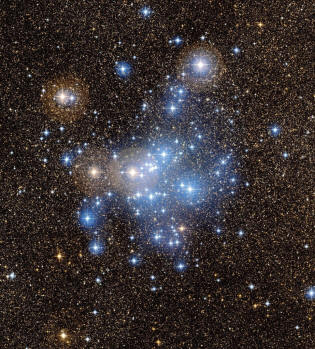
Star clusters Butterfly or M6
This butterfly wings, named Butterfly Cluster is an open cluster of stars located about 1,600 light years away in the constellation Scorpius.
The cluster size of 20 light years, contains hundreds of young blue stars.
The brightest star cluster is extremely massive, it is a supergiant BM Scorpii (also known as HD 160371).
Its yellow-orange color and contrast, the highlights in a neighborhood dotted with blue stars.
It seems that the Greek astronomer Ptolemy in the first century AD who recorded this cluster for the first time in observing a neighboring objects now called Messier 7. Formal credit of this discovery is, however, the Italian astronomer Giovanni Battista Hodierna who recorded the mass of the Butterfly in 1654.
A century later, it was rediscovered by several astronomers, and in 1764, Charles Messier was added as the sixth entry in his famous catalog (Messier 6). Estimates of the age of the cluster varies between 50 million years and 100 million years.
Image: The star clusters of Butterfly is characterized by the presence, among many blue stars, an orange-yellow supergiant, apparent magnitude 4.2.
credit: project GigaGalaxy Zoom
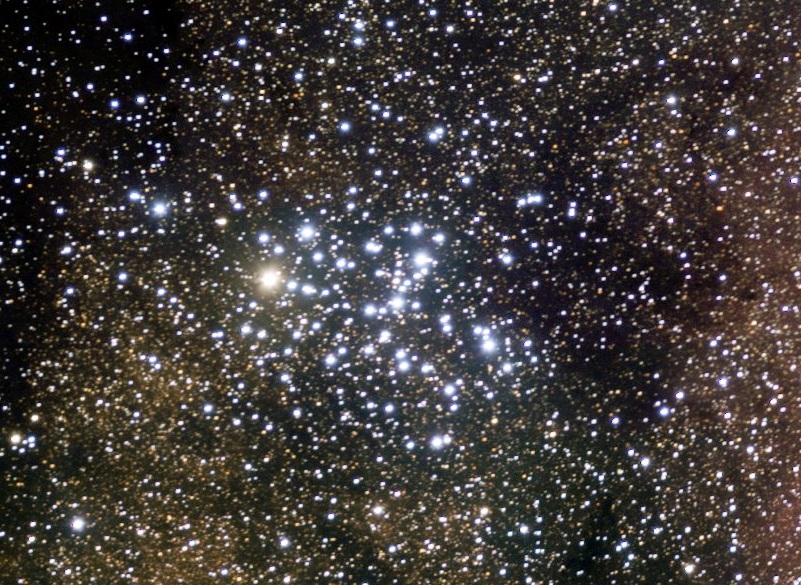
Star clusters M7
M7 is a beautiful open cluster, dominated by bright blue stars, as we see with the naked eye, in the tail of the constellation Scorpius.
It is about 1 000 light years from our solar system and measure approximately 20 to 25 light years in diameter. M7 contains hundreds of stars and was probably formed there are 200 million years.
This long exposure was taken on several nights from October to November 2009, since Yalbraith Australia. On this long exposure image, we can distinguish the dark clouds of dust and millions of stars located in the background that line the celestial background.
Image: The M7 star cluster has been known since antiquity, Ptolemy described in 130 AD.
The cluster wide and bright, shining on a background of thousands of heavenly stars.
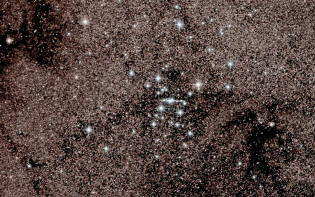
Star clusters R136 or RMC136
R136, also known as RMC 136 is a supercluster of stars near the center of the Tarantula Nebula, also known as the 30 Doradus.
It is outside of our Galaxy in the Large Magellanic Cloud, 170 000 light years from our solar system.
At the heart of this region of star formation, 30 Doradus lies a huge star cluster containing the largest, most massive and hottest known to date.
The clouds of gas and dust of the Tarantula Nebula are drawn by the powerful winds and ultraviolet radiation emitted by young stars (1 to 2 million years) of the cluster.
R136 is dense star cluster, containing among other things, twelve very massive luminous stars in its nucleus.
These stars have initial masses between 37 and 76 solar masses.
The estimated mass of the cluster R136 is 450 000 solar masses, suggesting that it will probably become a globular cluster in the future.
Image: The cluster of stars R136 are the star cluster R136, and part of the surrounding nebula. They are visible in this picture, natural color, taken by the Hubble Space Telescope.
Credit: NASA, ESA, & F. Paresce (INAF-IASF), R. O'Connell (U. Virginia), & the HST WFC3 Science Oversight Committee
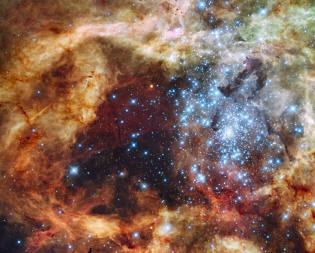
The star clusters M34 and NGC 1039
This beautiful open cluster M34, discovered by Giovanni Battista Hodierna and published in 1654, has nearly the same apparent size as the full moon.
The Messier object M34 fairly bright and extended, contains hundreds of stars, the brightest has an apparent magnitude of +7.9.
This cluster is also known, Clusters of Spiral. Easy to spot even in small telescopes, he lies about 1,800 light years from our solar system in the constellation Perseus.
If this distance estimate is correct, it must extend over a diameter of about 15 light years.
Formed simultaneously and from the same cloud of dust and gas, all the stars in M34 are older than 200 million years.
M34 lies in the plane of our Galaxy, it will eventually be dispersed under the effects of tidally related to encounters with interstellar clouds of the Milky Way and other stars.
Image: An open cluster is a group of irregular stars, consisting mostly of young, hot stars from a nebula common. These stars have a common evolution and are bound by gravity.
The open cluster usually contains tens to hundreds of stars in a region between 5 and 50 light years. A thousand open clusters are listed in the Milky Way. Credit & Copyright: Bob Franke
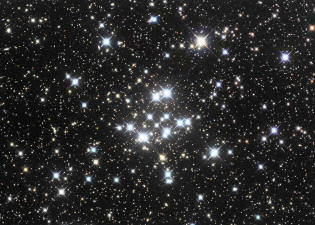
The globular cluster Omega Centauri
The star cluster Omega Centauri (ω Cen) and NGC 5139 is a globular cluster located in the constellation Centaurus.
This cluster was discovered by Edmond Halley in 1677 who has considered a nebulous.
Omega Centauri has been listed in the catalog of Ptolemy 2000 years ago, like a star.
This object has been identified as a globular cluster by the English astronomer John William Herschel in 1830.
It is the brightest and largest globular clusters known in our galaxy.
Of all the globular clusters in the Local Group of galaxies, alone, Mayall II in the Andromeda galaxy is brighter and more massive.
ω Centauri is so different from other galactic globular clusters, astronomers believe that it has a different origin.
It is located about 15 800 light years from our system and contains several million stars.
In the center of the cluster, the stars are grouped so that they are remote estimated, on average, only 0.1 light-years apart.
Omega Centauri is one of the objects visible to the naked eye, and it appears almost as large as the full moon.
Image: Image of the globular cluster Omega Centauri, taken in 2009 by the Hubble Space Telescope with the Wide Field Camera 3 (WFC3).
In this picture we see many white or yellow stars like our Sun, many to the color orange and red, red giants and a handful of blue stars.
Credit: NASA, ESA and the Hubble SM4 ERO Team
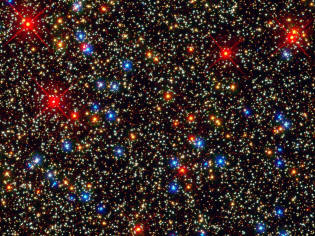
Star cluster Cygnus OB2
The Milky Way is home to numerous young star clusters that each contain hundreds of thousands of hot massive stars.
The Cygnus OB2 star cluster contains more than 60 O-type stars and about a thousand of type B, it is located about 4700 light-years from our solar system in the constellation Cygnus.
The Chandra telescope X-ray was used to detect X-ray emission in the outer atmosphere (corona) of young stars in the cluster and probe how these stellar nurseries form and evolve. About 1700 X-ray sources were detected, of which about 1450, become stars in the cluster.
The region is integrated into a set of star formation known as Cygnus X, which is one of the brightest objects in the sky on the radio wavelengths.
The young cluster Cygnus OB2 is one of the largest clusters known. This is the largest cluster of the northern hemisphere.
Although it is more than ten times more massive than the famous Orion Nebula, Cygnus OB2 is much less well known because it is located behind a massive dust cloud, called Cygnus Rift, obscuring a lot of stars.
Observations from radio to X-rays were used to gain a better understanding of the process of star formation.
Image: In this image, the Chandra X-ray (blue) were combined with infrared data from the Spitzer Space Telescope (red) and optical data from the Isaac Newton Telescope (orange).
Credit image: NASA .
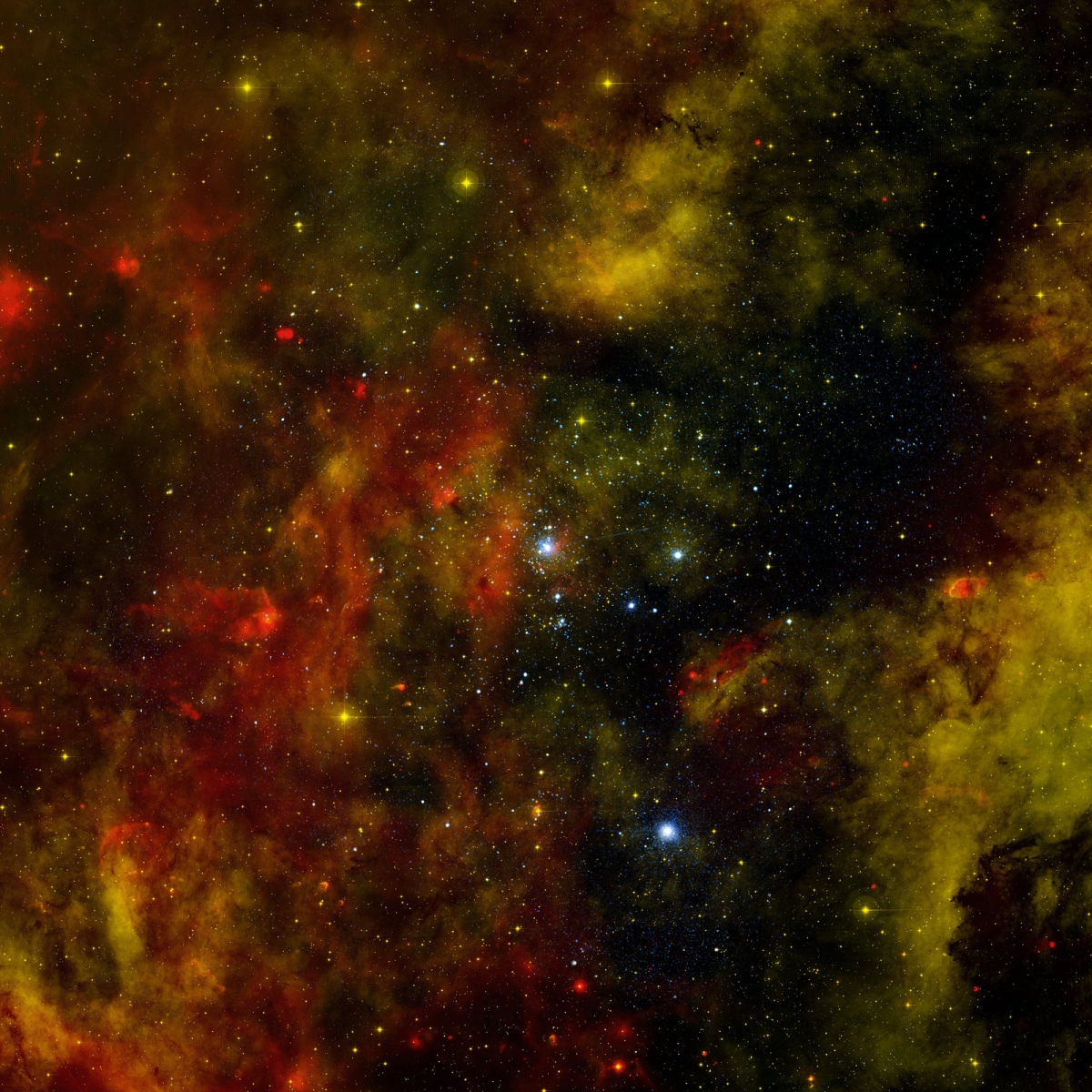
Star cluster M38 and M36
The open star cluster M38 can be seen with binoculars toward the constellation Auriga.
The star cluster M38 is a rich cluster of stars, each of which is about 200 million years ago.
Located in the disk of our galaxy, the Milky Way, M38 is still too young to harbor bright blue stars, although the brightest star is a yellow giant of magnitude 7.9 that shines 900 times more than our Sun.
This star cluster spans about 25 light years and lies about 4200 light-years from our Sun.
In the photo below cons, M38 is only about 2.5 degrees northwest of the open cluster M36.
Loosely bound by gravity, open clusters stretch over time and their stars escape slowly from the center of the Galaxy.
Discovered by Giovanni Batista Hodierna before 1654, Messier 38 (M38, NGC 1912) is one of the three open clusters in the southern part of the constellation Auriga. Charles Messier included it in his catalog September 25, 1764.
Its brightest stars form a pattern that resembles the Greek letter Pi, or an "oblique cross".
Image: Star cluster M38 and M36.
Credit & Copyright: AURA
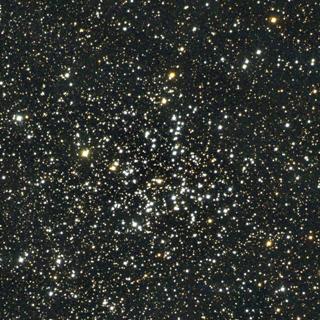
Star cluster M35 and NGC 2158
Open clusters of stars can be near or far, young or old, diffuse or compact.
They are usually found near the plane of our galaxy, the Milky Way. They contain 100 to 10,000 stars, all formed at about the same time.
The presence of bright blue stars is often characteristic of young open clusters. M35, on the upper left of the image is relatively close to 2,800 light-years away, relatively young, 150 million years and relatively diffuse, with about 2500 stars spread over a volume of 30 light years. NGC 2158 is a one star cluster at the bottom right of the image is a cluster of stars older and more compact, it is clearly shown on the image.
NGC 2158 is four times more distant than M35, more than 10 times older and more compact with many more stars in the same volume of space.
The bright blue stars of NGC 2158 have auto destroy, leaving the cluster in light of older stars and therefore more yellow. These two groups of stars are visible in the constellation Gemini.
Image: Star cluster M35 and NGC 2158.
Credit & Copyright: Dieter Willasch (Astro-Cabinet)
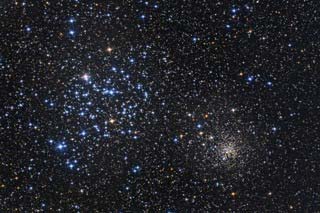
Star cluster M3
The star cluster M3 is a huge ball of stars very old, much older than our Sun, about 10 billion years.
Its stars roamed the galaxy as the galaxy itself was very young.
Many star clusters of its age have disappeared on some 200 globular clusters that survive today, M3 is one of the biggest and brightest star clusters.
It is easily visible in the Northern hemisphere with binoculars in the constellation of the Hunting Dogs.
The star cluster M3 is between Arcturus Bootes (α Bootis) and double stars, the brightest of hunting dogs (Cor Caroli). The apparent magnitude of the cluster M3 is 6.3, just above the limit of visibility with the naked eye. In binoculars you will see a whitish spot and diffuse. If most of the cluster stars are older than 10 billion years, a large number of stars are blue, so young, a few hundred million years.
The object was discovered by Charles Messier in 1764 but William Herschel who around 1784 realized it was a cluster of stars. M3 contains a considerable number of stars, about half a million, most stars are old and red.
Light takes about 35,000 years to reach us from M3, which spans about 150 light-years.
This large globular cluster hosts many variable stars, stars whose brightness varies, while most stars are almost constant brightness, which is its distinctive feature.
The center of this cluster is rich in stars, his heart is half the mass of the cluster. Seen through a telescope, it is one of the most beautiful objects in the sky of the northern hemisphere.
Image: Star cluster M3. The photo is a composite image of blue and red.
Credit & Copyright: S. Kafka & K. Honeycutt (Indiana University), WIYN, NOAO, NSF
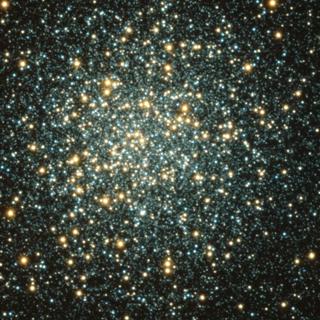
Star cluster M5
This beautiful nebula star was discovered between the scale and the Serpent. This is the 5th entry in the famous catalog of nebulae and star clusters of 18 century astronomer Charles Messier. At the time of Messier, this nebula seemed blurred and round and without stars, but Messier 5 (M5) is now known to be a globular cluster of 100,000 stars or more, bound by gravity and packed in a region of about 165 light years in diameter.
M5 is about 25,000 light years from the solar system. Itinerant halos of our galaxy, as globular clusters, are former members of the Milky Way. M5 is one of the oldest globular clusters, its stars are old almost 13 billion years. This beautiful cluster of stars is a popular target for ground-based telescopes.
Of course, since its low orbit, the Hubble Space Telescope has also captured his own point of view.
Image: This big beautiful plane of the central region is a part of the star cluster M5 and spans about 20 light years. We see its dense core left of the image, filled with old red giant stars gathered in clusters. While young stars distinguish themselves in yellow and blue vivid color tones. Image Credit: NASA, Hubble Space Telescope, ESA.
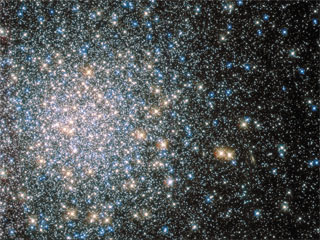
Arches Cluster
The Arches cluster is an open cluster in the constellation of Sagittarius (Archer), to ≈25 000 light-years from the sun. The special feature of this cluster is that it is only 100 al the center of the Milky Way. This Hubble Space Telescope image shows beautifully the densest star clusters in the Milky Way. As the Quintuplet cluster neighbor, it is very young two to four million years. The Arches cluster is so dense that in a region equal to the distance between the Sun and the nearest star (Proxima Centauri to ≈4,24 al), there are more than 100 000 stars, compared our region, that of the Sun is a true desert. In addition, at least 150 stars within the cluster Arches are among the brightest ever discovered in the Milky Way. These stars are so bright and so massive that they will burn their fuel in a short time (a few million years). Then they will die in spectacular supernova explosions.
Because of the short life of these stars, the gas between the stars in the cluster contains an unusually high amount of heavy elements, these heavy elements (beyond iron) were produced by the explosions generations of previous stars. Despite its brightness, the Arches cluster can not be seen with the naked eye because in the visible range, the light of the star cluster is completely absorbed by gigantic dust clouds, explosion residue. To see the clusters, astronomers use sensors that capture light in the areas of X-ray, infrared, and radio bands, these wavelengths are absorbed by the surrounding dust clouds.
Image: This observation shows the Arches cluster in the infrared, the Arches cluster is the densest cluster of the Galaxy. Image Credit: NASA / ESA Credit text: European Space Agency.
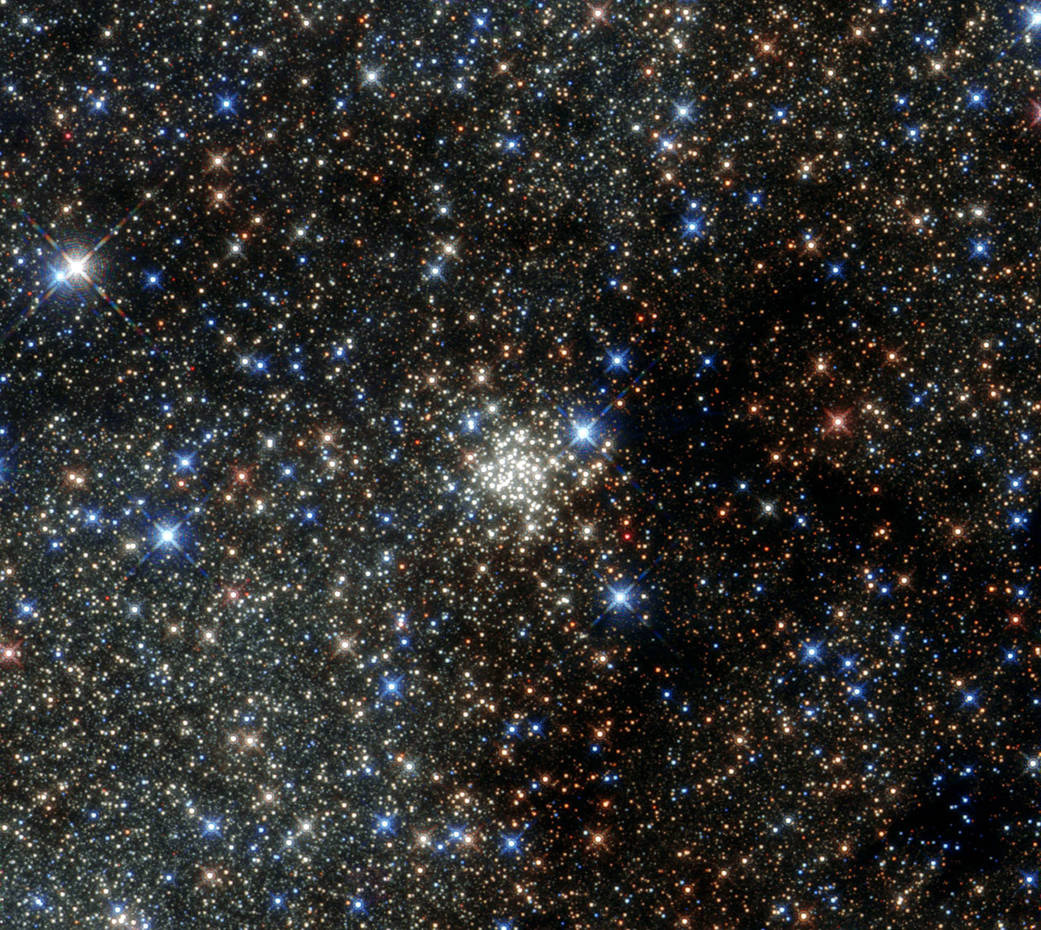
"The data available on this site may be used provided that the source is duly acknowledged."



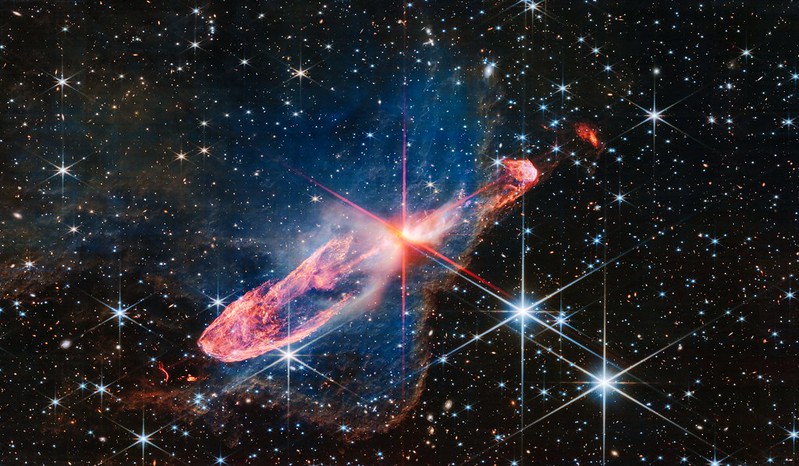 The life of the stars: From the collapse of the nebula to the cataclysmic explosion
The life of the stars: From the collapse of the nebula to the cataclysmic explosion
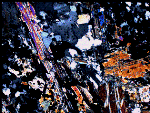 The paradox of the young Sun
The paradox of the young Sun
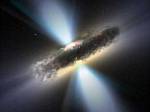 Black hole, massive star residue
Black hole, massive star residue
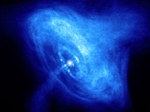 Neutron Star
Neutron Star
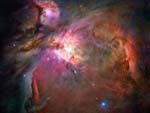 Blue and red giants
Blue and red giants
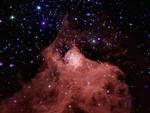 He is born four or five stars every year
He is born four or five stars every year
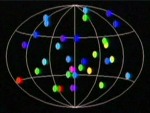 The mystery of gamma-ray bursts
The mystery of gamma-ray bursts
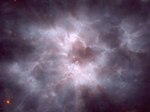 The white dwarfs
The white dwarfs
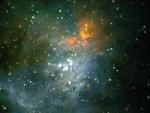 The brown dwarfs
The brown dwarfs
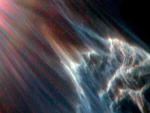 Stellar Winds of the Merope Nebula
Stellar Winds of the Merope Nebula
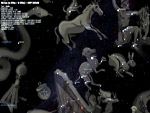 Bright Stars Sirius
Bright Stars Sirius
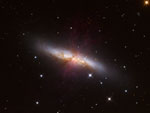 The Cigar Explosion
The Cigar Explosion
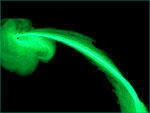 Escape velocity of small objects from black holes
Escape velocity of small objects from black holes
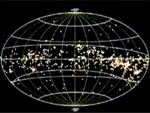 Gould's belt, a stellar firework
Gould's belt, a stellar firework
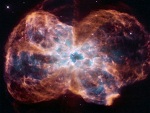 The death of stars as seen by hubble
The death of stars as seen by hubble
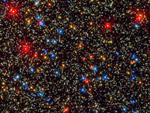 Blue, white, yellow, orange stars
Blue, white, yellow, orange stars
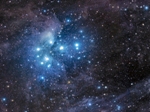 The 500 stars of the Pleiades
The 500 stars of the Pleiades
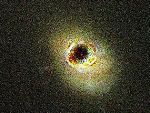 In search of black holes
In search of black holes
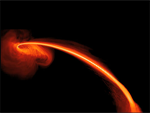 More details about Fomalhaut
More details about Fomalhaut
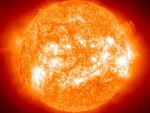 The yellow dwarfs
The yellow dwarfs
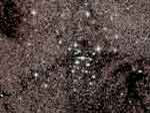 Thousands of stars bound by gravity
Thousands of stars bound by gravity
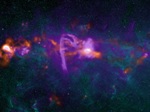 Sagittarius A, our black hole in 2013
Sagittarius A, our black hole in 2013
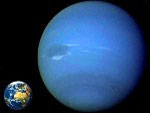 Comparative sizes of planets and stars
Comparative sizes of planets and stars
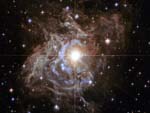 What is a Cepheid?
What is a Cepheid?
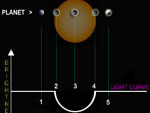 Turn off the stars to see exoplanets
Turn off the stars to see exoplanets
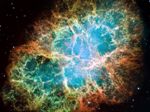 Supernovae or the death of a star
Supernovae or the death of a star
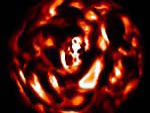 Most detailed image of Betelgeuse
Most detailed image of Betelgeuse
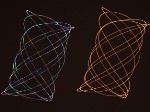 Star or Planet
Star or Planet
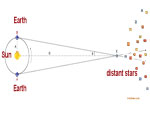 How to calculate the distance of stars?
How to calculate the distance of stars?
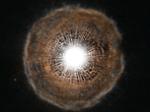 U Cam, a star at the end of its life
U Cam, a star at the end of its life
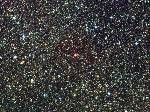 The red dwarfs
The red dwarfs
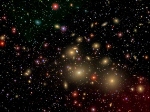 A gigantic black hole
A gigantic black hole
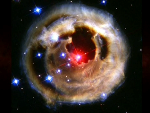 Live explosion seen by Hubble
Live explosion seen by Hubble
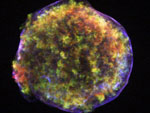 Stars near Alpha Centauri
Stars near Alpha Centauri
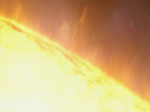 The Power of the Sun
The Power of the Sun
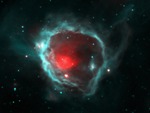 Coatlicue, the star at the origin of our Sun
Coatlicue, the star at the origin of our Sun